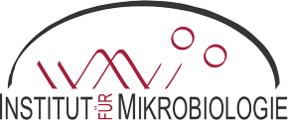
Common regulatory networks for the adaptation to low iron and oxygen tension
Dinoroseobacter shibae belongs to the abundant and ecological important marine Roseobacter clade. The Roseobacter clade is among the alpha-Proteobacteria according to current knowledge the most important group of heterotroph marine bacteria with an unusually great metabolic verity. Members of this clade are relevant for global biogeochemical circuits, like the carbon and the sulfur cycle.
D. shibae is able to generate energy by anaerobic respiration via denitrification. Moreover, it performs arginine and pyruvate fermentation to sustain anaerobic long-time survival. The adaptation to changing oxygen concentrations is controlled via a fine-tuned regulatory network involving the oxygen-sensing regulator Fnr and several Dnrs organized in regulatory cascades. The anaerobic regulation is closely connected to iron acquisition, though the anaerobic regulators depend on Fe-containing [FeS]-cluster or heme as cofactors. Three potential ferric uptake regulators (Fur) genes were found in the D. shibae genome. Consequently, following questions will be addressed in this project:
Main topics:
What is the detailed molecular structure of the anaerobic gene regulatory network (respiration and fermentation)?
What are the member genes of the iron modulon?
How is the interaction between anaerobic and iron metabolism controlled?
Research is funded by the Transregio SFB TRR51 of the DFG